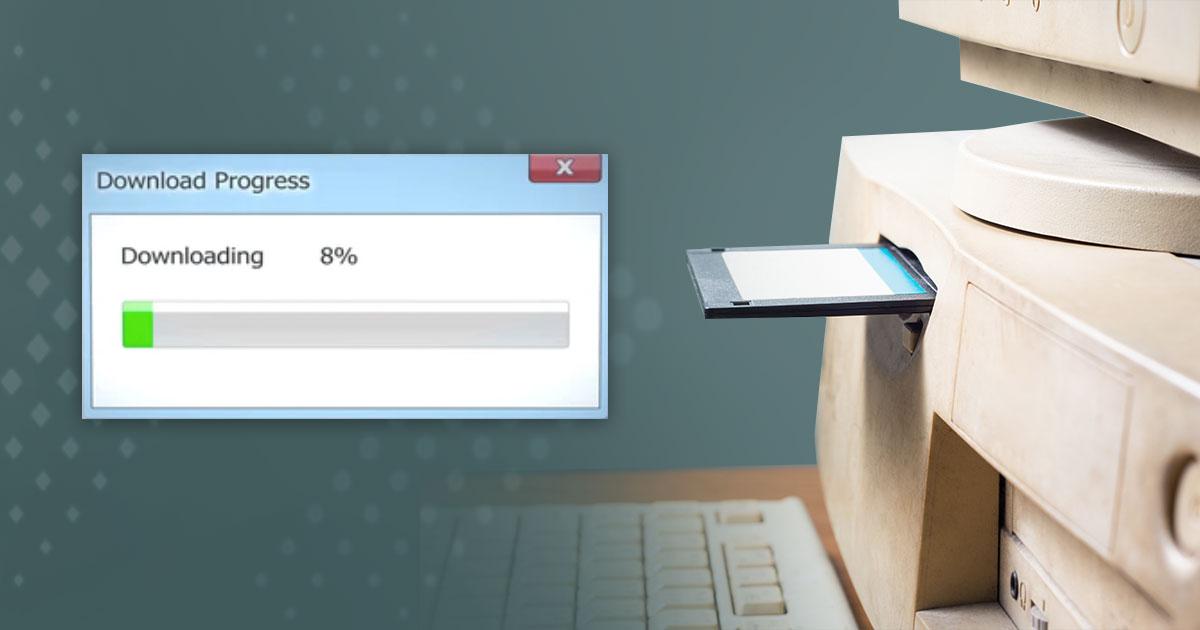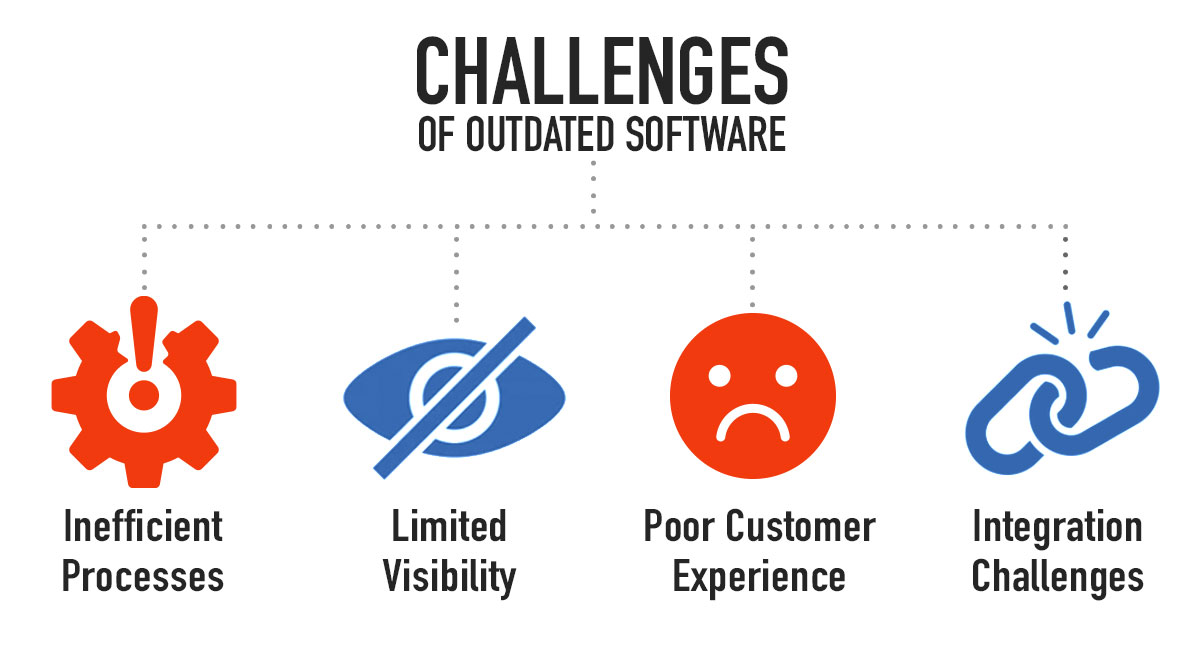
I n the agile world of extended warranty and service contract development, businesses across various industries are constantly seeking innovative solutions to streamline their operations and improve customer satisfaction. However, many companies still struggle with outdated warranty management software, hindering their ability to effectively manage extended warranties and service contracts. In this blog post, we will explore the challenges posed by archaic warranty software systems and discuss how embracing modern solutions can help overcome these obstacles.
Why Warranty Software Becomes Outdated
First off, managing extended warranties is hard. There are a lot of nuances from a legal perspective, not to mention the usability of the consumer. As an administrator, you need to not only have a team capable of building and developing software to manage around these expectations, but you’ll also need to grow your capabilities over time as the market changes. One of the biggest changes will always be keeping up with evolving industry demands. With outdated software, you are note enabled to seamlessly expand to new markets and quickly launch new products. Having the right technology can make or break your ability to grow and scale.
There is also a chance that, if your current extended warranty software was built in-house, you may experience a lack in up-to-date functionality. This is mostly due to the fact that keeping a software up and running takes a lot of manpower – which your company may or may not have. Software engineers are not only expensive, but building a system takes a lot of time. Most teams require between 8-10 developers and at least a 3-month lead time. Homegrown software development is a massive undertaking and regular updates tend to drop off as more projects pop up for businesses, leaving the program to slowly stop working.
The Challenges of Outdated Software
Outdated warranty software can pose significant challenges for businesses that offer extended warranties. These legacy systems often lack the flexibility, scalability, and integration capabilities required to efficiently manage warranty claims and provide seamless customer experiences. Here are some of the key pitfalls of relying on outdated warranty management software:

- Inefficient Processes: Legacy systems typically involve manual data entry and outdated workflows, resulting in time-consuming and error-prone processes. These inefficiencies can lead to delays in processing warranty claims, frustrate customers, and strain internal resources.
- Limited Visibility: Outdated software often lacks real-time data analytics and reporting capabilities. As a result, businesses struggle to gain insights into warranty performance, identify trends, and make data-driven decisions. This lack of visibility hinders companies’ ability to proactively address issues and optimize their extended warranty management strategies.
- Poor Customer Experience: In the age of seamless digital experiences, customers expect hassle-free warranty management. Outdated systems may not provide user-friendly interfaces or self-service options, forcing customers to endure lengthy phone calls or paperwork. This can lead to customer dissatisfaction, diminished brand loyalty, and negative online reviews.
- Integration Challenges: Many legacy warranty software systems are not designed to integrate with other business systems, such as menus, payment processing, service dispatching, DMS’, parts ordering, inspections, etc. This lack of integration makes it difficult to share data across departments, resulting in siloed information and inefficiencies in overall operations.
Embracing Modern Solutions
To overcome the limitations of outdated warranty management software, businesses should consider embracing modern solutions that leverage advanced technology. Here are some key strategies to help organizations transition to more efficient and effective extended warranty management:
Cloud-based F&I Software
Cloud-based warranty software offers numerous advantages over traditional on-premises systems. It provides scalability, accessibility, and flexibility, allowing businesses to easily manage and track warranty claims from anywhere, anytime. Cloud solutions also facilitate seamless updates and integrations, ensuring that companies can adapt to evolving needs and technologies.
Automation and Workflow Optimization
Modern warranty management software incorporates automation capabilities to streamline the full lifecycle of your products and reduce manual errors. By automating tasks like claim validation, approval, and documentation, businesses can significantly improve efficiency, reduce processing times, and enhance overall productivity. Workflow optimization ensures that warranty claims follow predefined paths, eliminating bottlenecks and improving the customer experience.
Real-time Analytics and Reporting
Advanced warranty software offers robust reporting and analytics features, empowering businesses to gain real-time insights into warranty performance. By monitoring key metrics, such as claim resolution times, product failure rates, and customer satisfaction, companies can identify trends, detect potential issues, and make data-driven decisions. This proactive approach enables businesses to optimize warranty programs and drive continuous improvement.
Enhanced Customer Experience
Modern warranty software places a strong emphasis on customer-centricity. Self-service portals, mobile apps, and chatbots empower customers to initiate warranty claims, track their progress, and access relevant information conveniently. Providing a frictionless customer experience not only increases satisfaction but also enhances brand loyalty and advocacy.
PCMI’s Modernized Software
Our mission is to empower our customers with future-ready, flexible administration software, which is why your industry colleagues are overwhelmingly choosing our PCRS software. PCRS enables third-party administrators, OEMs, dealers, and insurers to maximize their administration processes. Having processed over 64 million contracts, PCRS automates the full lifecycle of F&I products, extended warranties, and service contracts, and connects with over 140+ integration partners allowing end-users a seamless experience.
Built on the newest technologies, our administration software was created to grow and scale with you. Hundreds of customer and market driven enhancements are made yearly in order to provide a system that helps our customers fuel their growth. Our system is also equipped with configuration that enables you to seamlessly add new products in days without contacting PCMI. In addition, our system also provides global support for both F&I and consumer industries.
If you’d like to learn more about our administration software, check out our product page.
Conclusion
Outdated warranty management software can hinder business growth, lead to operational inefficiencies, and result in poor customer experience. To overcome these challenges, organizations must embrace modern solutions that offer cloud-based functionality, automation, real-time analytics, and seamless integrations. By leveraging advanced warranty software, businesses can streamline their extended warranty management processes, optimize performance, and deliver exceptional customer experiences. As the marketplace continues to evolve, investing in updated warranty software is essential for staying competitive and meeting the demands of today’s tech-savvy consumers.

